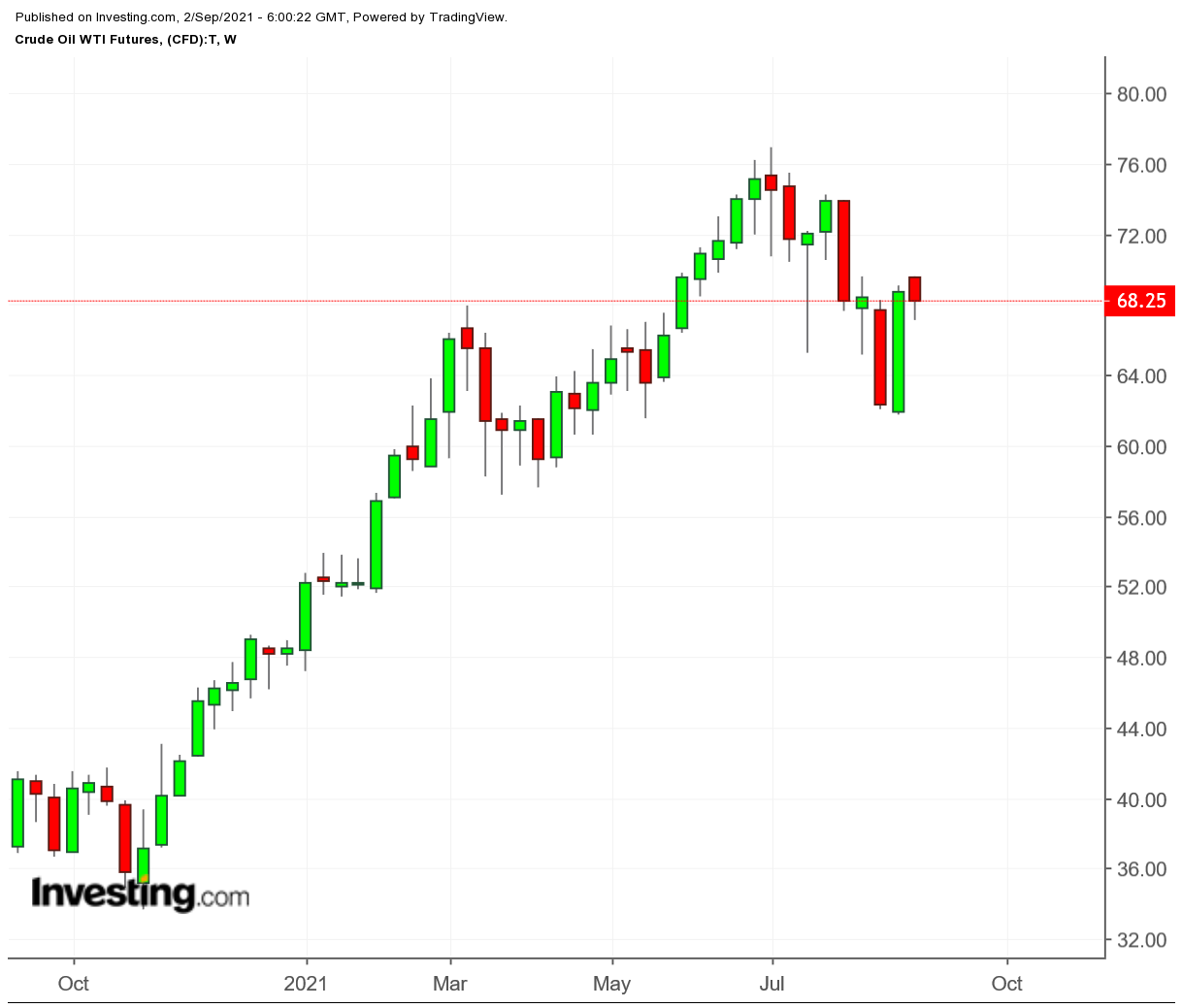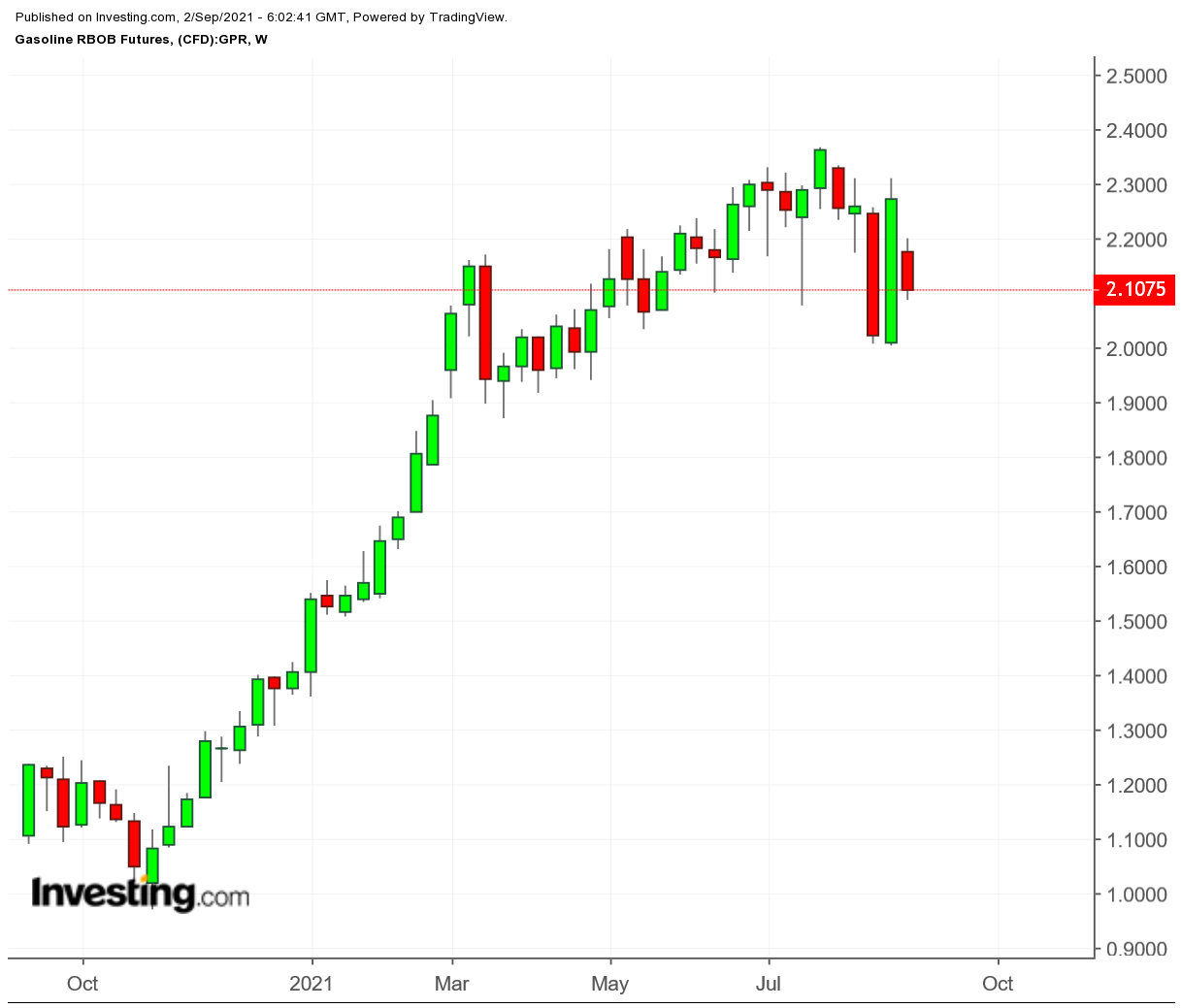Hurricane Ida passed through Louisiana earlier this week causing significant dislocation to the U.S. oil and refining industry. It made landfall as a Category 4 hurricane, wreaking substantial devestation to New Orleans as well as an array of additional communities along the Gulf Coast.
Here's what the situation looks like from an energy market perspective and how traders can expect it to impact output and inventories:

Offshore Oil Production
Nearly all of the U.S. crude oil production in the Gulf of Mexico (1.74 million bpd or 17% of U.S. production) was suspended as Hurricane Ida approached. As of Wednesday afternoon, 1.45 million bpd remains offline, even though it seems that offshore rigs and platforms suffered little to no damage. Production remains offline in part because personnel who were evacuated have not been able to return to the offshore platforms. Heliports at the main facility that transports workers to these offshore platforms sustained damage and are not accessible.
Offshore production outages will show up in next week’s EIA data and will also impact U.S. production and export data. The U.S. has been yielding about 11.3 million bpd, so traders should expect to see output slip by about 1.7 million bpd starting with the data reported next week and continuing for as long as the platforms remain offline.
Ports
Another issue preventing oil production from resuming is that key ports in Louisiana have suffered damage from the hurricane. Oil from offshore production flows to storage facilities at ports like Port Furchon, which typically has about 270 large supply vessels and 1,200 trucks coming through every day to supply over 250 companies. Hurricane Ida made landfall in this area and the port experienced storm surges of 12 to 15 feet, which caused severe flooding. Roads to the port are still blocked, so the full extent of the damage has yet to be assessed.
The Louisiana Offshore Oil Port (LOOP), which is associated with Port Furchon, is also offline. It does not appear to have suffered any major damage but has not been restarted because access to it is restricted. Related infrastructure on land is compromised. The LOOP is the only deep water terminal capable of offloading VLCC tankers in the U.S. There is no timeline for when operations might resume, but some estimates indicate it could even be weeks before repairs at Port Furchon can commence and the other dozen ports in Louisiana that remain closed at this time.
The port closures have resulted in a backlog of ships in the Gulf of Mexico. About 30 tankers are moored off the Louisiana coast waiting to load or discharge cargoes. The largest bottlenecks are near Baton Rouge and Lake Charles. The port in Lake Charles has reopened and there is hope that some of the gridlock may be relieved soon. It is not known whether these ships can be diverted to ports in Texas.
These backlogs mean that traders should expect to see lower than average crude oil exports from the U.S. as well as crude oil imports from other counties.
Refineries
In preparation for the hurricane, refineries in Louisiana shut down approximately 2.7 million bpd of refining capacity. This reflects about 14% of said capability in the United States. The damage assessment is ongoing, with most refineries still without power or access to feedstock even if they did not sustain damage from the hurricane or floods.
ExxonMobil’s Baton Rouge refinery, which processes 500,000 bpd of crude oil and Marathon Petroleum's (NYSE:MPC) 565,000 bpd refinery in Garyville are undamaged. ExxonMobil (NYSE:XOM) reports that it is restarting its refinery and Marathon is expected to restart operations as soon as power and feedstocks are available. It appears that 2 million bpd of refining capacity should be back online within three weeks.
Refinery closures mean that traders should expect to see a build in crude oil stocks reflected in the EIA data as soon as next week. On the other hand, gasoline stocks will be drawn down because refineries are not able to supply more products to the market.
Certain regions could be more impacted than others. For example, according to Patrick DeHaan at GasBuddy, we can expect to see a sizable inventory draw in the PADD 3 region. PADD 1 region’s gasoline inventories have declined by 30% over the past 2 months and according to GasBuddy, we will likely see more inbound gasoline deliveries to that region from abroad.
Abnormal EIA data for crude oil and gasoline could persist for 3 or 4 weeks, depending on how long it takes for refineries to come back online. (For more details on how we can expect the fallout from Hurricane Ida to impact the gasoline situation in the U.S., listen to my interview with Patrick DeHaan from GasBuddy here).
Gasoline Prices
Gasoline prices had started to decline in the U.S. before Hurricane Ida hit, but that trend has now reversed.

According to the EIA data released on Wednesday, the total amount of petroleum products supplied in the U.S. (used to estimate implied demand) for last week averaged 21.4 million bpd, which is the highest since September 2019. This could be slightly distorted by hurricane preparations last week, which usually produce a spike in gasoline demand in the regions bracing for an impact.
However, on Sept. 15, most U.S. gasoline stations can begin selling winter blend gasoline which is cheaper to produce (and generally costs less for the consumer). Areas impacted by the hurricane have already received a waiver from the EPA to use winter blend gasoline before Sept. 15 in order to alleviate any shortages. This switch—along with refineries coming back online—may help bring gasoline prices down in a few weeks.
